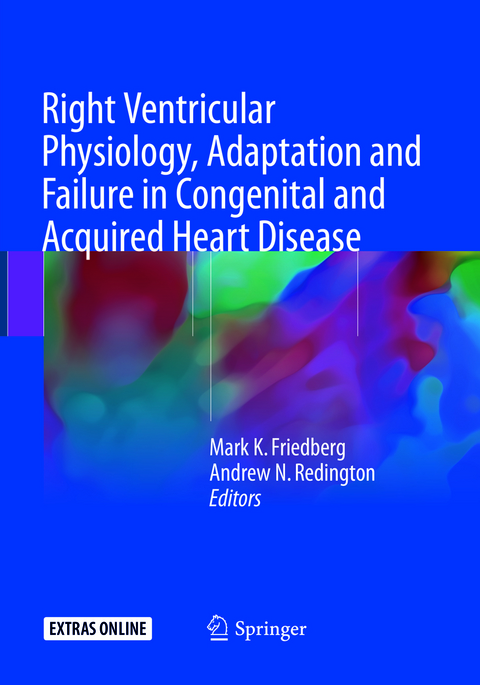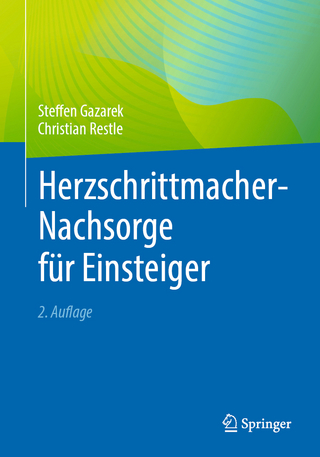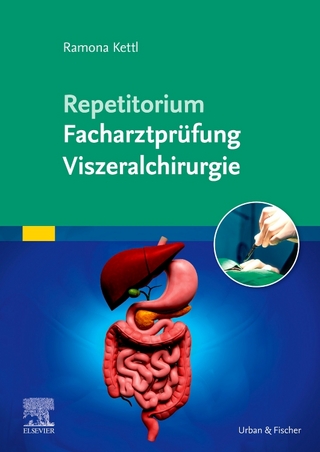
Right Ventricular Physiology, Adaptation and Failure in Congenital and Acquired Heart Disease
Springer International Publishing (Verlag)
978-3-319-88376-2 (ISBN)
This book spans topics in both congenital and acquired right heart disease providing readers with detailed information on the physiology, anatomy and myocardial mechanics of the right ventricle (RV), while describing the use of echo and MRI imaging to diagnose, and new developments in surgery and cardiac catheterization to treat.
Right Ventricular Physiology, Adaptation and Failure in Congenital and Acquired Heart Disease includes extensive discussion of RV-pulmonary interactions, pulmonary hypertension and ventricular-ventricular interactions, including specific topics in embryology, fetal RV function, RV mechanics, pathophysiology of RV adaptation/ failure, molecular aspects of RV dysfunction, congenital heart disease, pulmonary arterial hypertension, pulmonary valve replacement, stem cell and future therapies. It is thus important reading for all cardiovascular medicine professionals, but especially pediatric cardiologists and surgeons, those who manage t
hese patients in the cardiac care unit and investigators studying the RV.Mark Friedberg trained as a pediatric cardiologist at the Lucile Packard Children’s Hospital at Stanford in California where he also completed a senior fellowship in pediatric echocardiography and cardiac imaging. At Stanford he was awarded a Glaser Pediatric Research Network fellowship for the years 2005-6. Dr Friedberg joined the Hospital for Sick Children in Toronto and became an assistant professor at the University of Toronto in 2006 where he is currently a staff physician in pediatric and fetal echocardiography. He was appointed as an associate scientist to the Sickkids research institute in 2012 and his lab investigates ventricular-ventricular interactions and mechanisms of biventricular dysfunction in increased RV afterload. His research interests include assessment of ventricular-ventricular interactions, ventricular function, especially RV function in pediatric congenital and acquired heart disease, tissue Doppler and deformation imaging in children and assessment of mechanical dyssynchrony and biventricular pacing in children. Andrew Redington's research interests include ventricular function, integrated physiology of congenital heart disease, and the pathophysiology of late postoperative functional decline. He led a Leducq Transatlantic Research Network of Excellence investigating the biology of remote ischemic preconditioning. He has co-edited seven textbooks. Dr. Redington was awarded a British Heart Foundation Research Scholarship and subsequently received his Doctorate of Medicine in 1988 (UK). He was appointed Consultant Paediatric Cardiologist at the Royal Brompton Hospital, London in 1990, became a fellow of the Royal College of Physicians (UK) in 1994, and became a full professor in the University of London in 1995. In 1998, he transferred his clinical practice and research team to Great Ormond Street Hospital in London. He moved to Canada in August 2001, to take the position of Head of Cardiology at The Hospital for Sick Children, Toronto.
Introduction.- Embryological origins: How does the RV form?.- The fetal RV: systemic powerhouse or prone to fail?.- Metabolism and bioenergetics in the hypertrophied RV: what is different from the LV?.- Why does the RV myocardium fail?.- Does the RV really contract differently from the LV?.- How does the pressure loaded RV adapt and why does it fail? Macro and molecular perspectives.- Novel mechanisms of lung injury and repair in PAH: does success in the lab translate to hope for our patients?.- Right-left ventricular interactions in PAH.- From M-mode to 3D echo:-what should we use to assess RV function?.- What does MRI offer beyond volumes?.- Why is the RV different in TOF and in ASD?.- RV dyssynchrony and cardiac resynchronization therapy: New insights into mechanisms and pathophysiology.- The single right ventricle in the Fontan circulation: How does it work and why does it fail?.- Transcatheter pulmonary valve replacement: When should we pull the trigger? What do we hope to achieve?.- What should the echocardiographer tell me to plan tricuspid valve repair?.- Investigating the RV: What is the path going forward?.- Ventricular-vascular coupling in PAH: An engineer's perspective is relevant to the clinician.- The RV in cardiac transplantation-How do we know if it's going to cope and what do we do when it doesn't?.- Does the RV really contract differently from the LV?.- How can computer models contribute to the clinician's assessment of ventricular-ventricular interactions, ventricular-vascular interactions and RV failure?.- Can the RV support the failing LV.- Ebstein anomaly: Does echocardiographic assessment determine surgical repair?.- Arrhythmogenic right ventricular cardiomyopathy: Why does it happen and how do we make the diagnosis?.- Can surgeons preserve RV function in hypoplastic left heart syndrome?.- The RV in ccTGA: Why does it fail? Can we prevent it?.- Drugs?.- Assist devices.- News on the horizon.
| Erscheinungsdatum | 19.01.2019 |
|---|---|
| Zusatzinfo | X, 267 p. 98 illus., 72 illus. in color. |
| Verlagsort | Cham |
| Sprache | englisch |
| Maße | 178 x 254 mm |
| Gewicht | 657 g |
| Themenwelt | Medizinische Fachgebiete ► Chirurgie ► Herz- / Thorax- / Gefäßchirurgie |
| Medizinische Fachgebiete ► Innere Medizin ► Kardiologie / Angiologie | |
| Studium ► 1. Studienabschnitt (Vorklinik) ► Physiologie | |
| Schlagworte | Congenital Heart Disease • Ebstein anomaly • Pulmonary hypertension • Right ventricular dyssynchrony • Transcatheter pulmonary valve replacement • Translational research |
| ISBN-10 | 3-319-88376-3 / 3319883763 |
| ISBN-13 | 978-3-319-88376-2 / 9783319883762 |
| Zustand | Neuware |
| Informationen gemäß Produktsicherheitsverordnung (GPSR) | |
| Haben Sie eine Frage zum Produkt? |
aus dem Bereich


